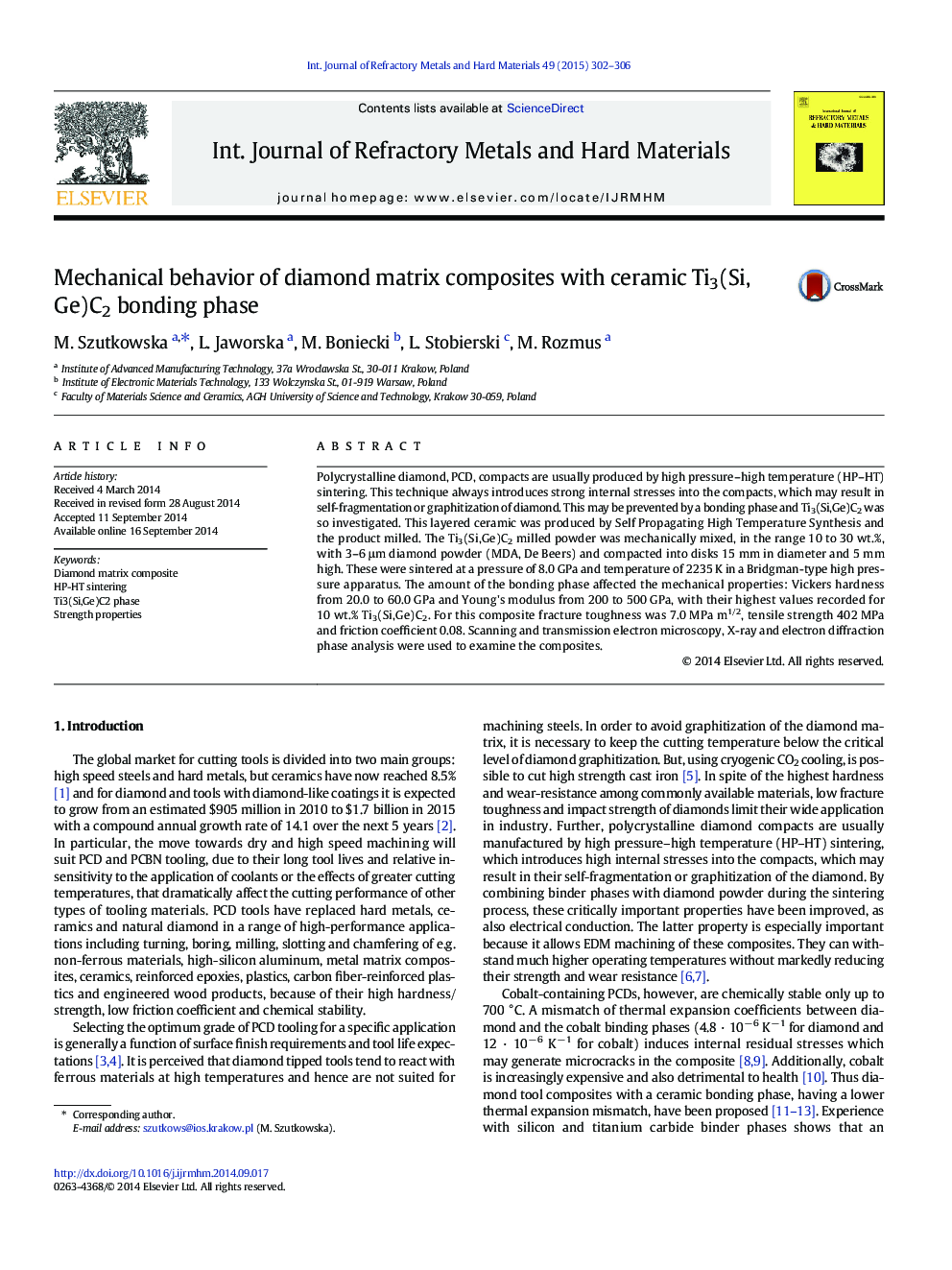| Article ID | Journal | Published Year | Pages | File Type |
|---|---|---|---|---|
| 1603019 | International Journal of Refractory Metals and Hard Materials | 2015 | 5 Pages |
•Amount of the bonding phase influences mechanical properties of DTi3(Si,Ge)C2 composite.•DTi3(Si,Ge)C2 composite with 10 wt.% of bonding phase reveals best strength properties.•DTi3(Si,Ge)C2 composite is recommended for burnishing tools.
Polycrystalline diamond, PCD, compacts are usually produced by high pressure–high temperature (HP–HT) sintering. This technique always introduces strong internal stresses into the compacts, which may result in self-fragmentation or graphitization of diamond. This may be prevented by a bonding phase and Ti3(Si,Ge)C2 was so investigated. This layered ceramic was produced by Self Propagating High Temperature Synthesis and the product milled. The Ti3(Si,Ge)C2 milled powder was mechanically mixed, in the range 10 to 30 wt.%, with 3–6 μm diamond powder (MDA, De Beers) and compacted into disks 15 mm in diameter and 5 mm high. These were sintered at a pressure of 8.0 GPa and temperature of 2235 K in a Bridgman-type high pressure apparatus. The amount of the bonding phase affected the mechanical properties: Vickers hardness from 20.0 to 60.0 GPa and Young's modulus from 200 to 500 GPa, with their highest values recorded for 10 wt.% Ti3(Si,Ge)C2. For this composite fracture toughness was 7.0 MPa m1/2, tensile strength 402 MPa and friction coefficient 0.08. Scanning and transmission electron microscopy, X-ray and electron diffraction phase analysis were used to examine the composites.
